
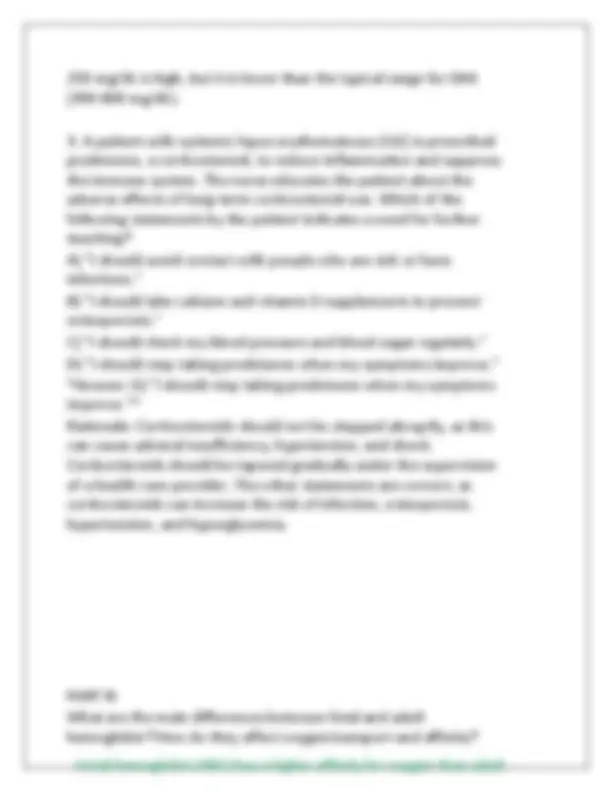
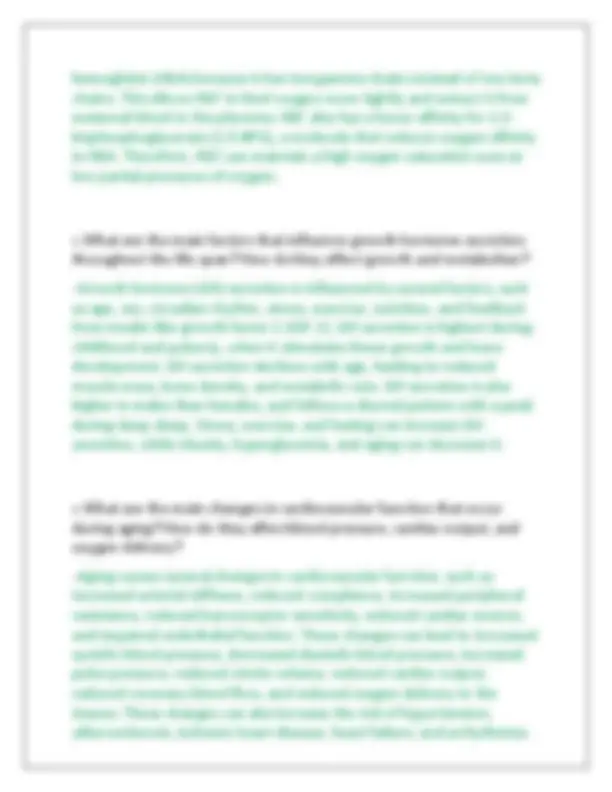
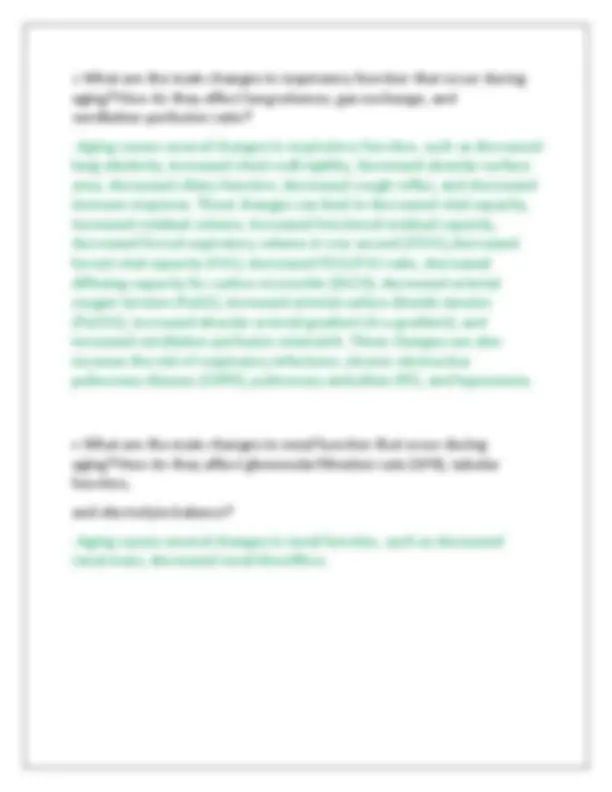

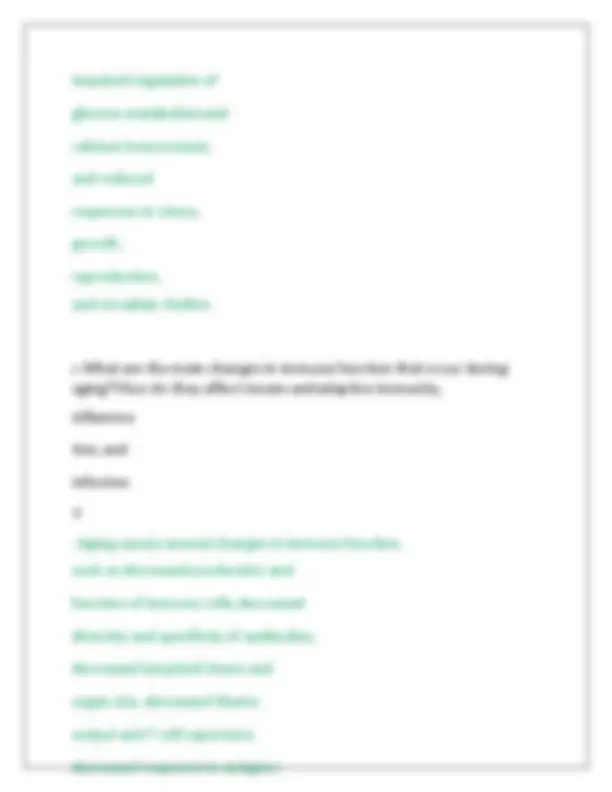
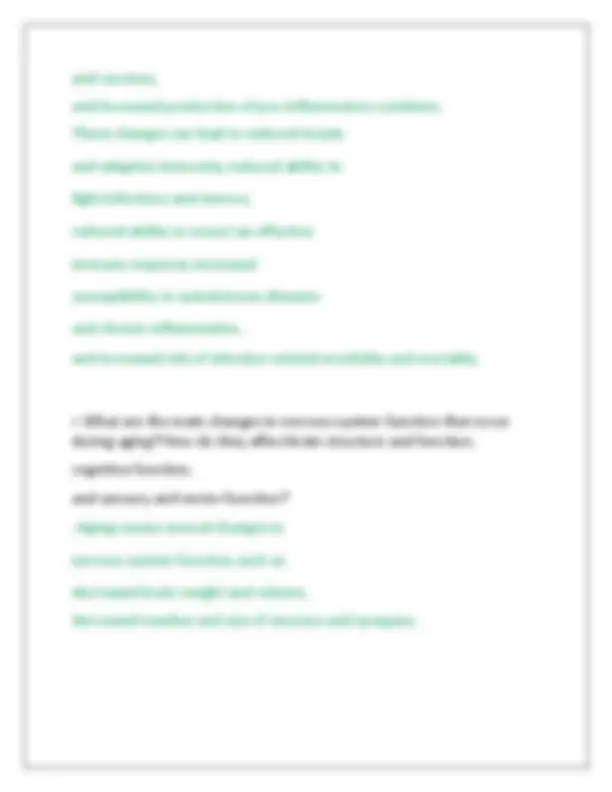
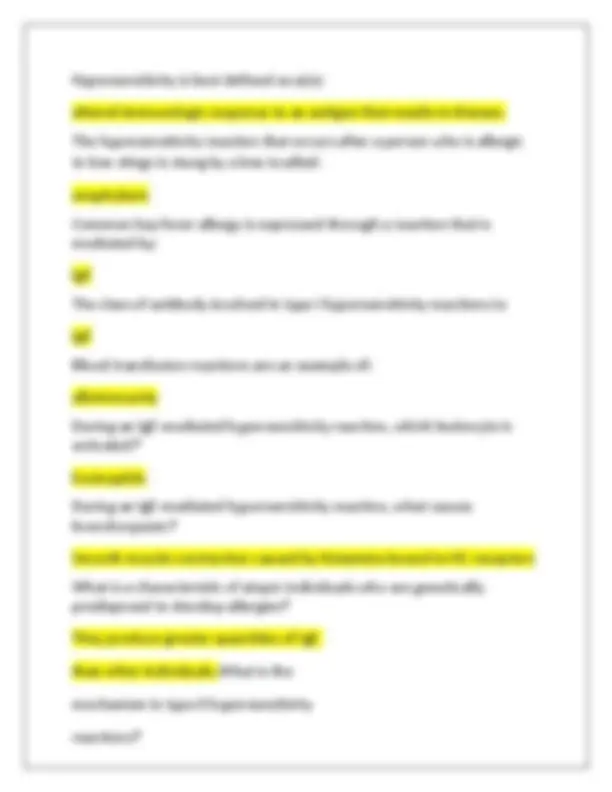
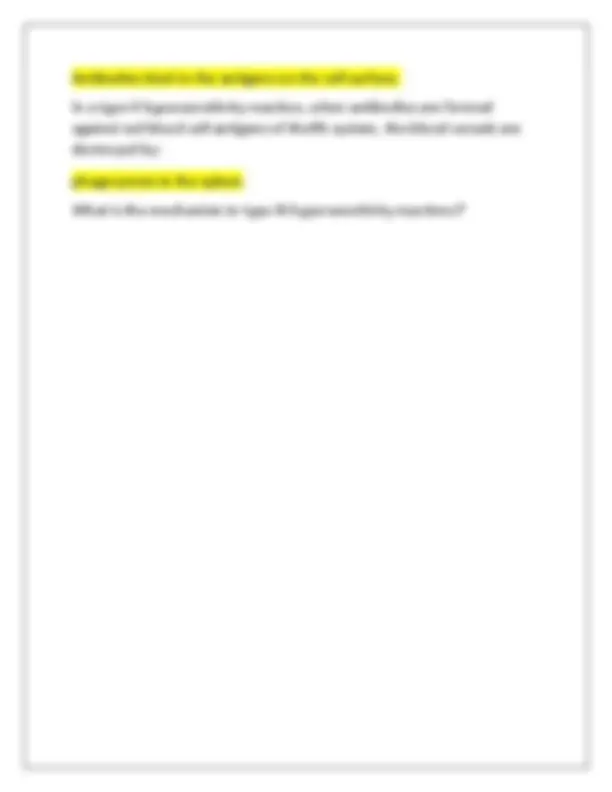
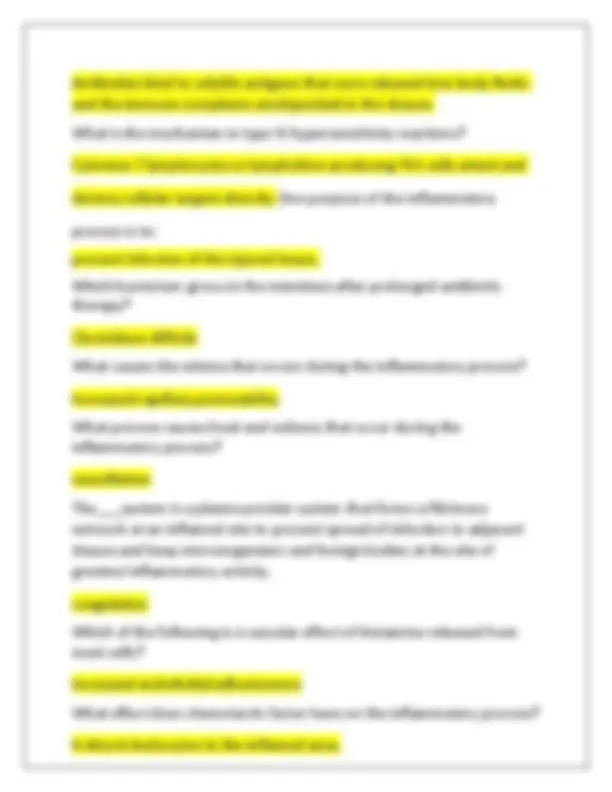

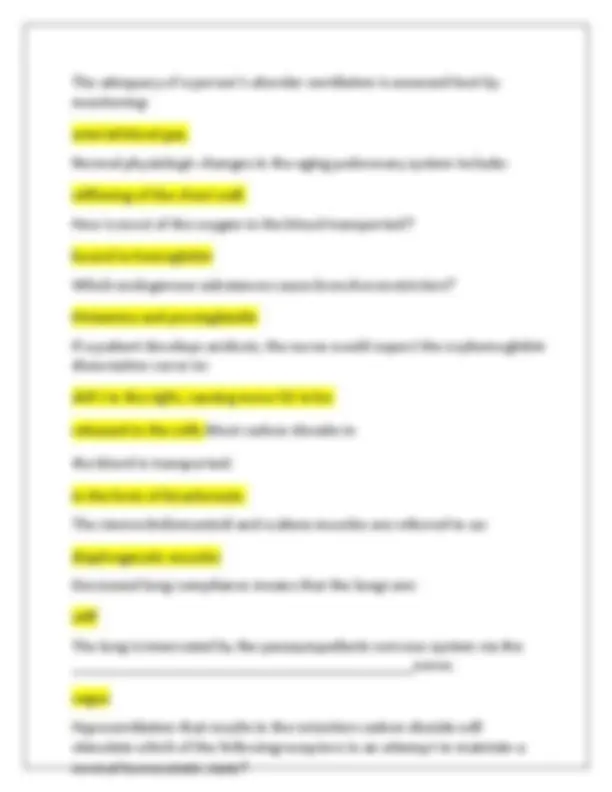
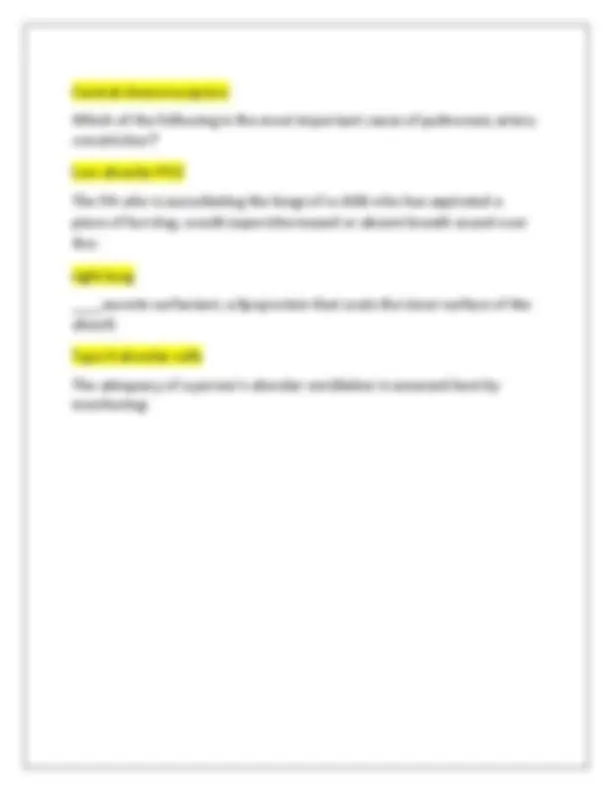
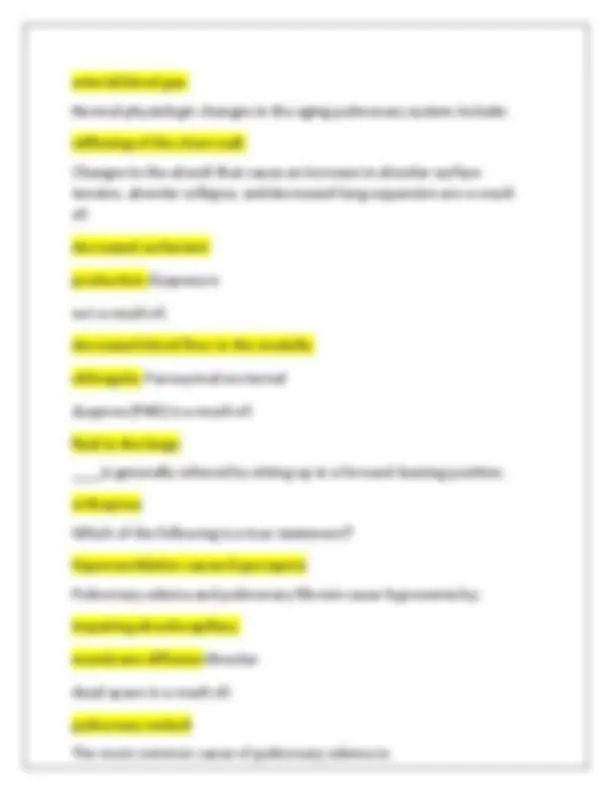
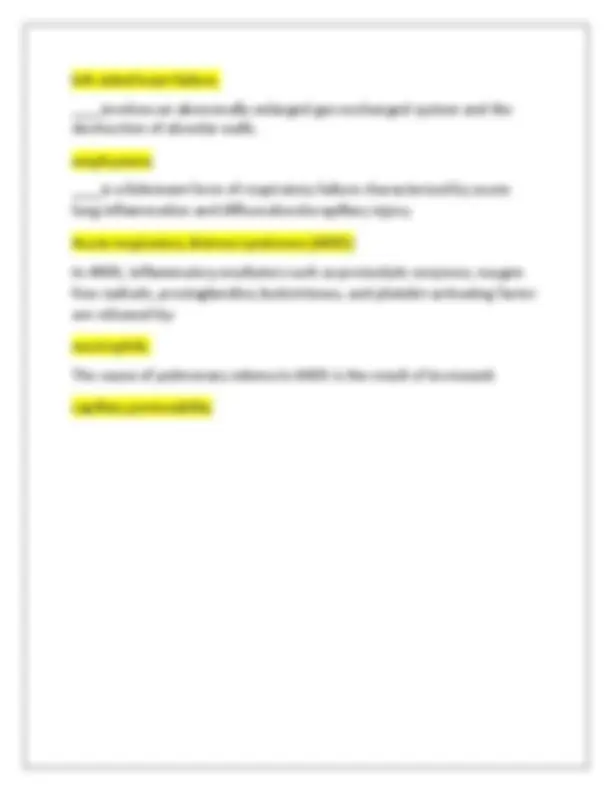
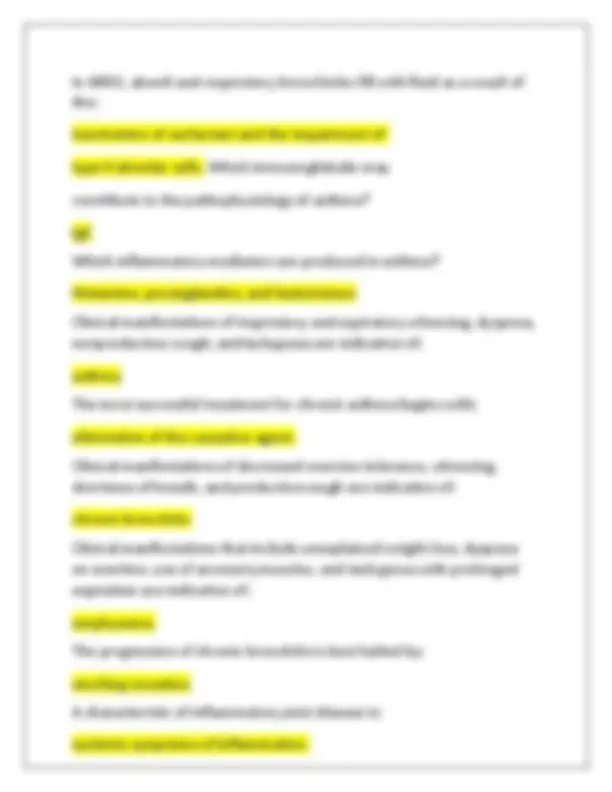

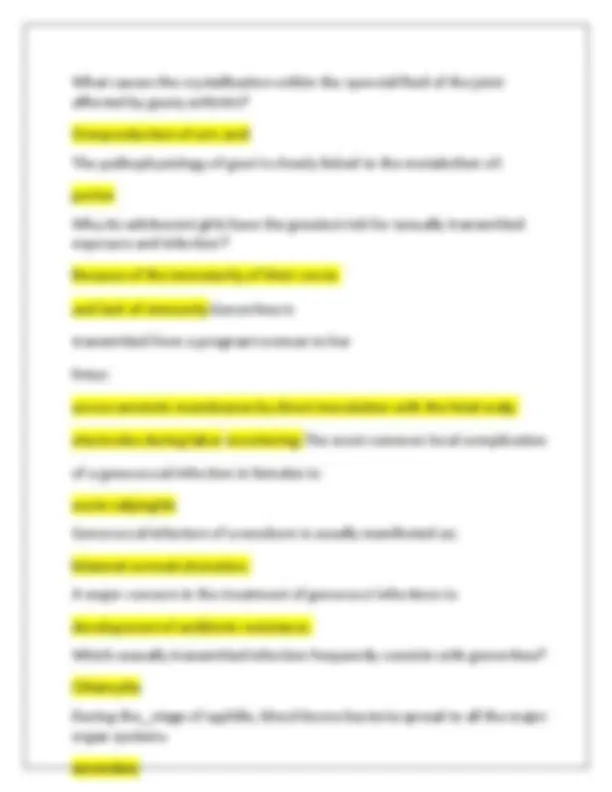
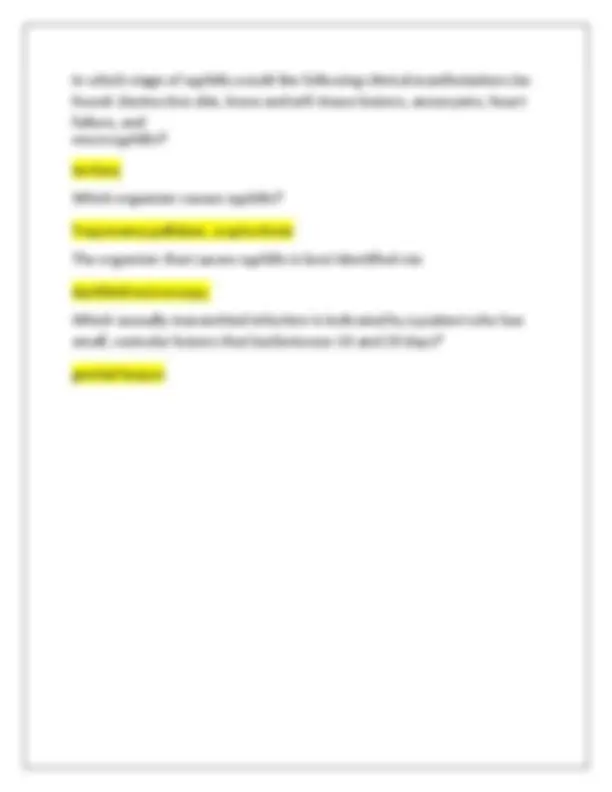
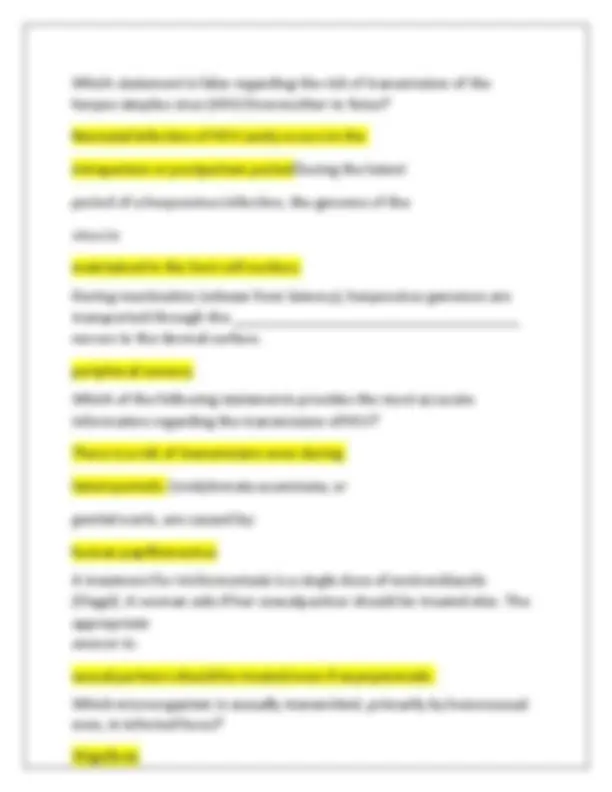
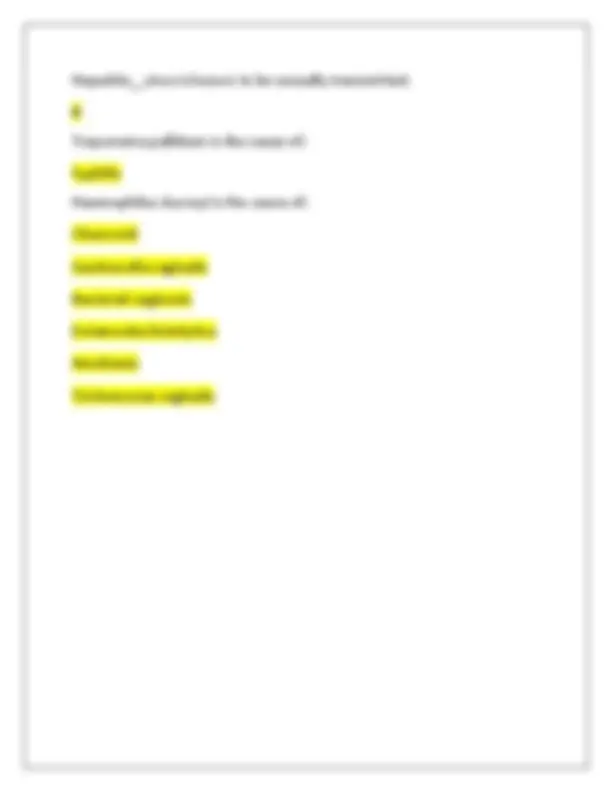
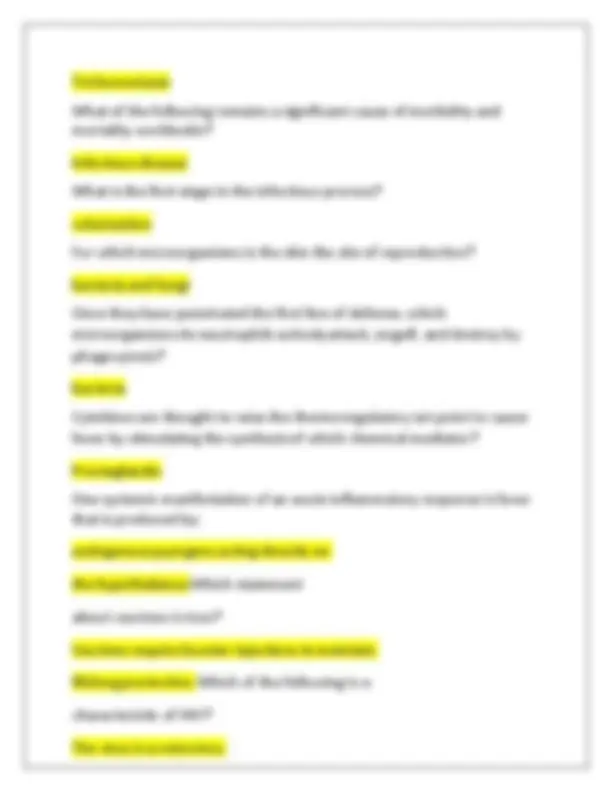
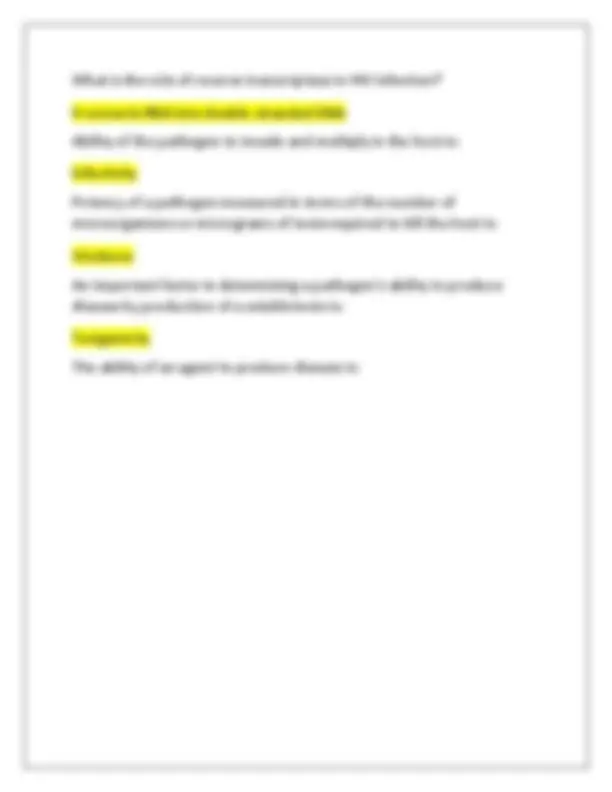
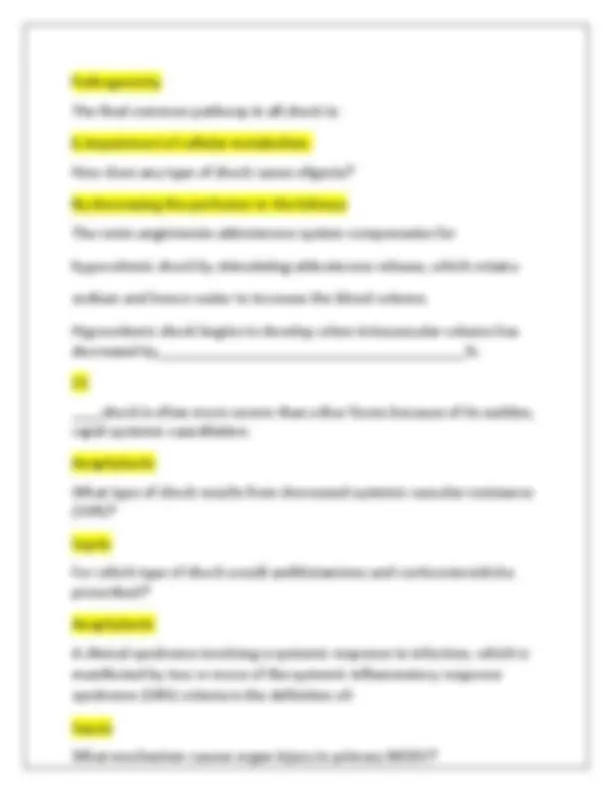
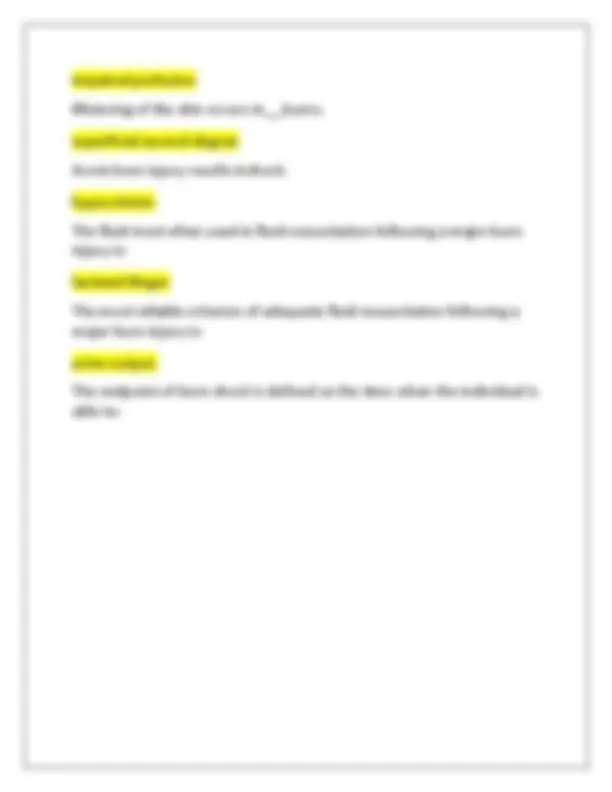
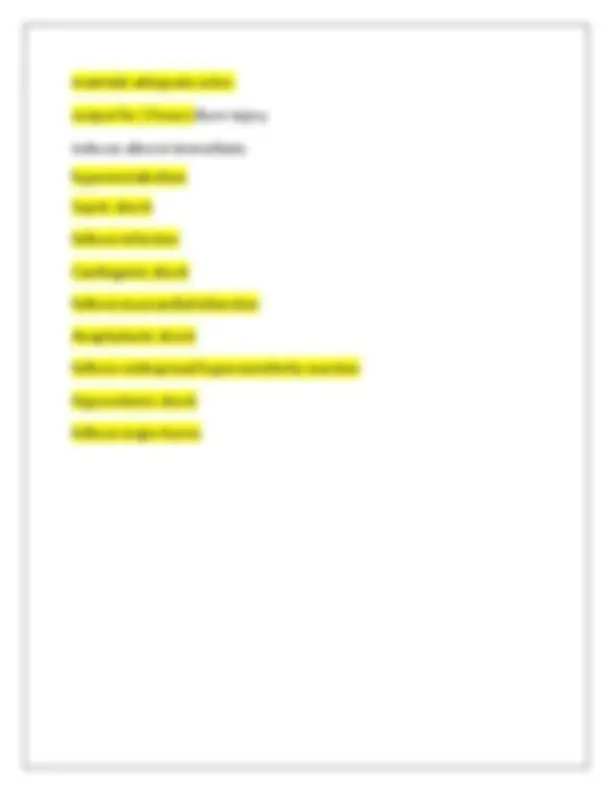


Study with the several resources on Docsity

Earn points by helping other students or get them with a premium plan


Prepare for your exams
Study with the several resources on Docsity

Earn points to download
Earn points by helping other students or get them with a premium plan
Community
Ask the community for help and clear up your study doubts
Discover the best universities in your country according to Docsity users
Free resources
Download our free guides on studying techniques, anxiety management strategies, and thesis advice from Docsity tutors
Questions and answers related to advanced pathophysiology. It covers topics such as respiratory, renal, endocrine, nervous, and musculoskeletal system function, as well as hypersensitivity reactions and the inflammatory process. The questions are multiple-choice and include rationales for the correct answers. The document could be useful as study notes or exam preparation material for nursing students or healthcare professionals.
Typology: Exams
1 / 33

This page cannot be seen from the preview
Don't miss anything!


























hemoglobin (HbA) because it has two gamma chains instead of two beta chains. This allows HbF to bind oxygen more tightly and extract it from maternal blood in the placenta. HbF also has a lower affinity for 2,3- bisphosphoglycerate (2,3-BPG), a molecule that reduces oxygen affinity in HbA. Therefore, HbF can maintain a high oxygen saturation even at low partial pressures of oxygen.
parathyroid hormone;
and vaccines, and increased production of pro-inflammatory cytokines. These changes can lead to reduced innate and adaptive immunity, reduced ability to fight infections and tumors, reduced ability to mount an effective immune response, increased susceptibility to autoimmune diseases and chronic inflammation, and increased risk of infection-related morbidity and mortality.
decreased neurotransmitter synthesis and release, decreased blood flow and oxygen delivery to the brain, increased accumulation of amyloid plaques and neurofibrillary tangles, and increased oxidative stress and inflammation. These changes can lead to reduced brain structure and function, reduced cognitive function and memory, reduced attention and processing speed, reduced executive function and problem-solving skills, reduced learning and plasticity, and increased risk of neurodegenerative diseases such
Hypersensitivity is best defined as a(n): altered immunologic response to an antigen that results in disease. The hypersensitivity reaction that occurs after a person who is allergic to bee stings is stung by a bee is called: anaphylaxis Common hay fever allergy is expressed through a reaction that is mediated by: IgE The class of antibody involved in type I hypersensitivity reactions is: IgE Blood transfusion reactions are an example of: alloimmunity During an IgE-mediated hypersensitivity reaction, which leukocyte is activated? Eosinophils During an IgE-mediated hypersensitivity reaction, what causes bronchospasm? Smooth muscle contraction caused by histamine bound to H1 receptors What is a characteristic of atopic individuals who are genetically predisposed to develop allergies? They produce greater quantities of IgE than other individuals. What is the mechanism in type II hypersensitivity reactions?
Antibodies bind to the antigens on the cell surface. In a type II hypersensitivity reaction, when antibodies are formed against red blood cell antigens of the Rh system, the blood vessels are destroyed by: phagocytosis in the spleen What is the mechanism in type III hypersensitivity reactions?
When histamine binds the histamine- 2 (H2) receptor, inflammation is: inhibited Frequently H1 and H2 receptors are located on the same cells and act in a(n) fashion. antagonistic Which chemical mediators induce pain during an inflammatory response? Prostaglandins and bradykinin Which chemical mediator derived from mast cells retracts endothelial cells to increase vascular permeability and causes leukocyte adhesion to endothelial cells? platelet-activating factor (PAF) What are the inflammatory effects of nitric oxide (NO)?
It decreases mast cell function and decreases platelet aggregation. Which of the following indicates a correct sequence in phagocytosis? Recognition, engulfment, fusion, destruction When looking at white blood cell differentials, PAs know that individuals have early, acute inflammatory reactions when they notice elevations of which leukocyte? neutrophils The predominant phagocytic cells in the later stages of an inflammatory response are: monocytes What is the role of eosinophils in regulating vascular mediators released from mast cells? Eosinophils release histaminase that limits the effects of histamine during acute inflammation A role of NK cells is to: eliminate malignant cells Which manifestation of inflammation is systemic? Fever and leukocytosis One systemic manifestation of the acute inflammatory response is fever that is produced by o n the hypothalamus. endogenous pyrogens acting Which solution is best to use when cleaning a wound that is healing by epithelialization?
The adequacy of a person's alveolar ventilation is assessed best by monitoring: arterial blood gas. Normal physiologic changes in the aging pulmonary system include: stiffening of the chest wall. How is most of the oxygen in the blood transported? bound to hemoglobin Which endogenous substances cause bronchoconstriction? Histamine and prostaglandin If a patient develops acidosis, the nurse would expect the oxyhemoglobin dissociation curve to: shif t to the right, causing more O2 to be released to the cells. Most carbon dioxide in the blood is transported: in the form of bicarbonate. The sternocleidomastoid and scalene muscles are referred to as: diaphragmatic muscles Decreased lung compliance means that the lungs are: stiff The lung is innervated by the parasympathetic nervous system via the nerve. vagus Hypoventilation that results in the retention carbon dioxide will stimulate which of the following receptors in an attempt to maintain a normal homeostatic state?
Central chemoreceptors Which of the following is the most important cause of pulmonary artery constriction? Low alveolar PO The PA who is auscultating the lungs of a child who has aspirated a piece of hot dog, would expect decreased or absent breath sound over the: right lung secrete surfactant, a lipoprotein that coats the inner surface of the alveoli. Type II alveolar cells The adequacy of a person's alveolar ventilation is assessed best by monitoring: